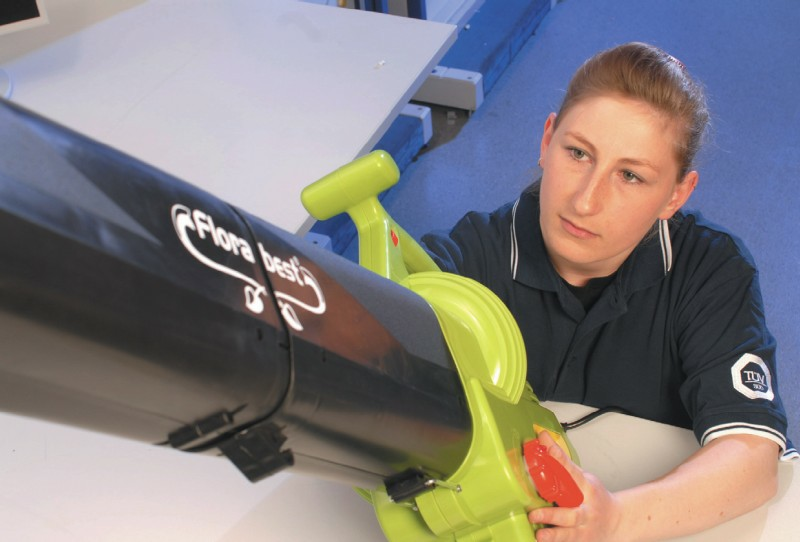 Many companies still apply for testing and certificates with a plethora of certification bodies in order to gain access to individual export markets. However, there is a far simpler method of achieving this, as Jean-Louis Evans, managing director at TÜV SÜD Product Service, explains.
Many companies still apply for testing and certificates with a plethora of certification bodies in order to gain access to individual export markets. However, there is a far simpler method of achieving this, as Jean-Louis Evans, managing director at TÜV SÜD Product Service, explains.
Using multiple certification bodies for testing and certificates can significantly slow down time to market for new products and also increases development costs, potentially making products more expensive and less competitive once they do hit the market. If only there were a single test that gives manufacturers access to international markets for their electrical products. Well, the reality is that the CB Scheme does actually achieve this.
The IECEE CB Scheme is the world’s first international system for the mutual acceptance of test reports and certificates for electrical and electronic components, equipment and products, with 20 product categories that include IT and office equipment, portable tools and electrical medical equipment.
The national committee of each member country designates its National Certification Body (NCB) or bodies, which are responsible for issuing CB Test Certificates. The testing is conducted by CB Test Laboratories (CBTLs) affiliated to the NCBs. Tests are based on the use of international (IEC/CISPR) standards and the resultant CB Test Certificate proves that a product complies with those standards.
Every three years, these test laboratories are audited to ensure a consistent level of testing standards worldwide. The audits are done by other CB Scheme members that are competitive businesses of the laboratory being reviewed, but this helps to create a mutual sense of trust within the CB Scheme and thereby encourages international acceptance of testing.
National differences
The CB Scheme should be viewed as a passport which helps a product gain individual country approval. It does not completely eliminate the need for additional ‘in country’ approval or testing, but it does get you 85% of the way there. Declared national differences are considered as part of the testing process which helps to ensure that a manufacturer meets all the requirements of their target markets.
Such differences include ‘country deviations’, which are national characteristics or practices that cannot be changed, including climatic or electrical earthing conditions. ‘Regulatory Requirements’ also cover the differing restrictions, licenses and laws imposed by the government or the national authority.
Missing a trick
 The main objective of the scheme is to facilitate trade by promoting harmonisation of individual national standards with international ones. This brings manufacturers a step closer to the utopian ideal of ‘one test, one market’. The multi-lateral agreement reduces significantly the need for duplicate testing, is operational in 53 countries, and is being used by more than 15,000 manufacturers worldwide. This is clearly of huge benefit to those manufacturers selling products internationally that are not already using the scheme.
The main objective of the scheme is to facilitate trade by promoting harmonisation of individual national standards with international ones. This brings manufacturers a step closer to the utopian ideal of ‘one test, one market’. The multi-lateral agreement reduces significantly the need for duplicate testing, is operational in 53 countries, and is being used by more than 15,000 manufacturers worldwide. This is clearly of huge benefit to those manufacturers selling products internationally that are not already using the scheme.
Before the CB Scheme, the only option open to manufacturers was to have products tested and certified by many different national testing laboratories/certification bodies – a difficult, time consuming and expensive process. Under the CB Scheme manufacturers now only have to deal with one CBTL. The CBTL that is chosen will then do all the work, including testing to the national differences and country deviations of the product’s destination countries.
Once the manufacturer has their CB Test Report and Certificate, they can use this to obtain national approvals in many other member countries. The manufacturer is required to submit an application, and may also be required to submit a product sample in the country of destination. However, under the CB Scheme, Reports and Certificates can only be rejected with good technical justification. Relative to the alternative of embarking on the lengthy and expensive approach of conducting multiple tests to satisfy multiple countries, this is a seamless process. Any manufacturer that takes advantage of the CB Scheme can significantly reduce the cost, effort and time involved in obtaining approvals.
In fact, many countries will now accept CB Test Reports and Certificates without the need for local certification. For example, any electrical product exported to South Africa must have a CB Test Report and Certificate.
The CB Scheme offers obvious advantages and it is the only initiative of its kind that has succeeded where others have failed. For the 53 countries that do recognise it, it would seem that testing utopia for international exports does exist. The ability to carry out one test programme to in effect, gain many national marks, faster and at a lower cost, surely means that more manufacturers should be taking advantage of it.
TÜV SÜD Product Service
www.tuvps.co.uk
T: 01489 558 100

